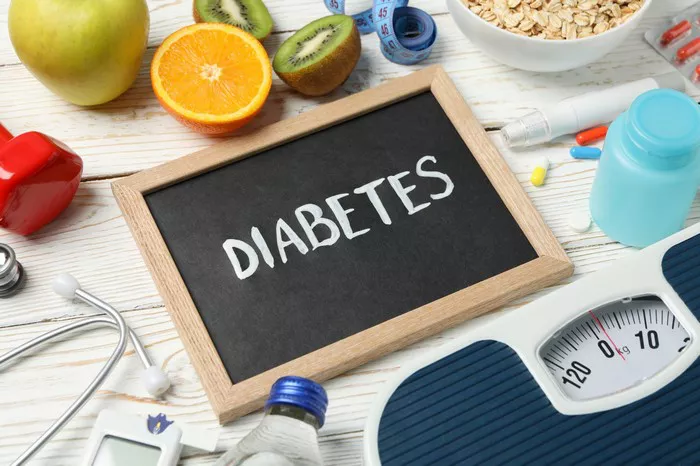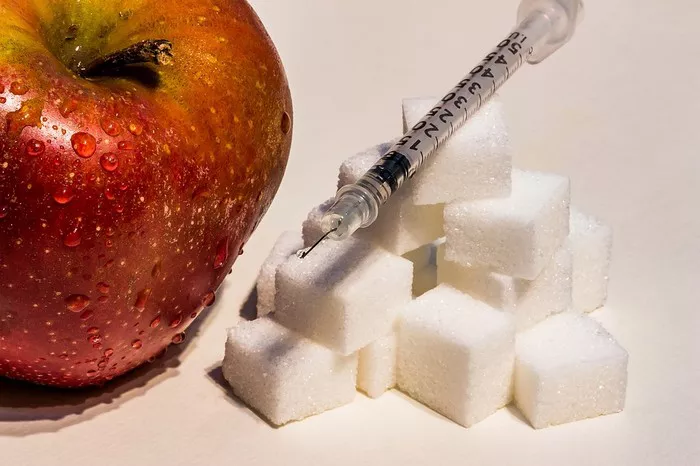Type 2 diabetes mellitus (DMII) is a chronic metabolic disorder characterized by high blood glucose levels (hyperglycemia) due to insulin resistance and relative insulin deficiency. It is the most common form of diabetes, accounting for about 90-95% of all diabetes cases worldwide. This article delves into the medical intricacies of DMII, including its pathophysiology, risk factors, clinical manifestations, diagnosis, management, and complications.
Pathophysiology of Type 2 Diabetes Mellitus
Type 2 diabetes results from a combination of genetic, environmental, and lifestyle factors leading to insulin resistance and beta-cell dysfunction. Insulin, a hormone produced by the beta cells in the pancreas, regulates blood glucose levels by facilitating glucose uptake into cells for energy production or storage.
- Insulin Resistance: In DMII, the body’s cells become resistant to the effects of insulin. This resistance occurs primarily in muscle, liver, and adipose tissues. The exact mechanisms are complex and involve defects in insulin signaling pathways. Key contributing factors include obesity, particularly visceral adiposity, which releases free fatty acids and pro-inflammatory cytokines that interfere with insulin signaling.
- Beta-Cell Dysfunction: The pancreas initially compensates for insulin resistance by increasing insulin production. However, over time, the beta cells become dysfunctional and fail to secrete sufficient insulin to overcome the resistance. This dysfunction is partly due to genetic predisposition, glucotoxicity (chronic high blood glucose levels), and lipotoxicity (chronic high free fatty acid levels).
- Incretin Effect: Incretins, such as glucagon-like peptide-1 (GLP-1), enhance insulin secretion in response to meals. In people with DMII, the incretin effect is blunted, contributing to insufficient insulin release.
Risk Factors for Type 2 Diabetes Mellitus
Several factors increase the risk of developing type 2 diabetes, including:
- Genetic Predisposition: Family history of diabetes is a significant risk factor. Certain genetic variants have been associated with increased susceptibility to DMII.
- Obesity: Excess body weight, especially central obesity, is a major risk factor due to its strong association with insulin resistance.
- Sedentary Lifestyle: Physical inactivity reduces glucose uptake by muscles, contributing to insulin resistance.
- Diet: Diets high in refined sugars, saturated fats, and low in fiber increase the risk of DMII.
- Age: The risk of DMII increases with age, particularly after the age of 45, due to progressive insulin resistance and beta-cell dysfunction.
- Ethnicity: Certain ethnic groups, including African Americans, Hispanic/Latino Americans, Native Americans, Asian Americans, and Pacific Islanders, have higher rates of DMII.
- Gestational Diabetes: Women who have had gestational diabetes have a higher risk of developing type 2 diabetes later in life.
- Polycystic Ovary Syndrome (PCOS): Women with PCOS are at increased risk due to associated insulin resistance.
Clinical Manifestations
The onset of type 2 diabetes is often insidious, and many individuals remain asymptomatic for years. Common symptoms include:
- Hyperglycemia: Elevated blood glucose levels can cause polyuria (frequent urination), polydipsia (increased thirst), and polyphagia (increased hunger).
- Fatigue: Persistent high blood sugar levels can lead to fatigue and weakness.
- Weight Changes: Unintentional weight loss or weight gain can occur.
- Blurred Vision: High blood glucose levels can cause osmotic changes in the lens of the eye, leading to blurred vision.
- Infections: Increased susceptibility to infections, particularly urinary tract infections and skin infections, due to impaired immune function.
- Slow Wound Healing: Poor circulation and high glucose levels can impair wound healing.
- Acanthosis Nigricans: Dark, velvety patches of skin, usually in the neck and armpit areas, indicating insulin resistance.
Diagnosis of Type 2 Diabetes Mellitus
The diagnosis of DMII is based on specific criteria set by the American Diabetes Association (ADA):
- Fasting Plasma Glucose (FPG): A fasting plasma glucose level of ≥126 mg/dL (7.0 mmol/L) after an overnight fast.
- Oral Glucose Tolerance Test (OGTT): A 2-hour plasma glucose level of ≥200 mg/dL (11.1 mmol/L) following a 75g oral glucose load.
- Hemoglobin A1c (HbA1c): A HbA1c level of ≥6.5%. This test reflects average blood glucose levels over the past 2-3 months.
- Random Plasma Glucose: A random plasma glucose level of ≥200 mg/dL (11.1 mmol/L) in the presence of classic symptoms of hyperglycemia or hyperglycemic crisis.
Management of Type 2 Diabetes Mellitus
The management of DMII involves a multifaceted approach aimed at controlling blood glucose levels, preventing complications, and improving quality of life. Key components include lifestyle modifications, pharmacotherapy, and regular monitoring.
Lifestyle Modifications:
- Diet: A balanced diet rich in whole grains, fruits, vegetables, lean proteins, and healthy fats is essential. Patients should limit intake of refined sugars and saturated fats. Dietary modifications should be individualized based on preferences, cultural factors, and metabolic goals.
- Physical Activity: Regular physical activity improves insulin sensitivity and aids in weight management. The ADA recommends at least 150 minutes of moderate-intensity aerobic exercise per week, along with resistance training.
- Weight Management: Weight loss is crucial for overweight and obese individuals. Even a modest weight loss of 5-10% can significantly improve glycemic control.
Pharmacotherapy:
- Metformin: Metformin is the first-line medication for DMII. It decreases hepatic glucose production and improves insulin sensitivity. It is generally well-tolerated and associated with minimal risk of hypoglycemia.
- Sulfonylureas: These medications stimulate insulin secretion from the pancreas. However, they carry a risk of hypoglycemia and weight gain.
- Thiazolidinediones: These drugs improve insulin sensitivity in muscle and adipose tissue. They can cause weight gain and have potential adverse effects on the heart and bones.
- DPP-4 Inhibitors: Dipeptidyl peptidase-4 inhibitors enhance the incretin effect, thereby increasing insulin release and decreasing glucagon levels.
- GLP-1 Receptor Agonists: These injectable medications mimic the effects of GLP-1, promoting insulin secretion, reducing glucagon levels, and slowing gastric emptying. They also promote weight loss.
- SGLT2 Inhibitors: Sodium-glucose co-transporter 2 inhibitors reduce glucose reabsorption in the kidneys, leading to glucosuria. They also promote weight loss and have cardiovascular benefits.
- Insulin: Insulin therapy is necessary for patients who cannot achieve glycemic control with oral medications. It is also used in cases of severe hyperglycemia, during surgery, or in pregnancy.
Monitoring:
- Self-Monitoring of Blood Glucose (SMBG): Patients are encouraged to monitor their blood glucose levels regularly using a glucometer. The frequency of SMBG depends on the treatment regimen and individual goals.
- Continuous Glucose Monitoring (CGM): CGM devices provide real-time glucose readings and trends, helping patients make informed decisions about their treatment.
- Hemoglobin A1c: Regular measurement of HbA1c levels helps assess long-term glycemic control. The target HbA1c level varies depending on the patient’s age, comorbidities, and risk of hypoglycemia.
Complications of Type 2 Diabetes Mellitus
Poorly managed DMII can lead to both acute and chronic complications, which can be debilitating and life-threatening.
Acute Complications:
- Hyperosmolar Hyperglycemic State (HHS): This is a severe hyperglycemic emergency characterized by extreme hyperglycemia, dehydration, and altered mental status. It requires immediate medical attention and aggressive fluid and electrolyte replacement.
- Hypoglycemia: Although less common than in type 1 diabetes, hypoglycemia can occur due to insulin or sulfonylurea therapy. Symptoms include shakiness, sweating, confusion, and, in severe cases, loss of consciousness.
Chronic Complications:
- Cardiovascular Disease (CVD): Patients with DMII are at increased risk of atherosclerosis, leading to coronary artery disease, stroke, and peripheral artery disease. Strict control of blood pressure, cholesterol, and blood glucose levels is essential to reduce CVD risk.
- Nephropathy: Diabetic nephropathy is a leading cause of end-stage renal disease. Microalbuminuria (small amounts of albumin in urine) is an early marker, and regular screening is crucial. Management includes blood glucose control, blood pressure control, and the use of angiotensin-converting enzyme inhibitors (ACE inhibitors) or angiotensin II receptor blockers (ARBs).
- Retinopathy: Diabetic retinopathy is a leading cause of blindness. It involves damage to the blood vessels in the retina and requires regular eye examinations. Laser therapy and anti-VEGF injections can help manage advanced retinopathy.
- Neuropathy: Diabetic neuropathy can affect peripheral nerves, leading to pain, tingling, and loss of sensation, primarily in the feet and hands. Autonomic neuropathy can affect cardiovascular, gastrointestinal, and genitourinary systems. Management focuses on blood glucose control and symptomatic relief.
- Foot Ulcers and Amputations: Poor circulation and neuropathy increase the risk of foot ulcers, which can lead to infections and, in severe cases, amputations. Regular foot care and early intervention are critical to preventing complications.
Prevention and Early Detection
Preventing DMII involves addressing modifiable risk factors through lifestyle changes. Public health initiatives and education play a vital role in raising awareness and promoting healthy behaviors. Key preventive strategies include:
- Healthy Diet: Encouraging a balanced diet rich in whole grains, fruits, vegetables, and lean proteins while reducing the intake of refined sugars and saturated fats.
- Regular Physical Activity: Promoting regular physical activity to improve insulin sensitivity and maintain a healthy weight.
- Weight Management: Supporting weight loss and weight maintenance through a combination of diet, exercise, and behavioral interventions.
- Regular Screening: Identifying individuals at high risk, such as those with prediabetes, and providing regular screening and early intervention to prevent the progression to DMII.
- Education and Support: Providing education on diabetes prevention and management through community programs, healthcare providers, and support groups.
See also: For Preventing Type 2 Diabetes: A Comprehensive Guide
Conclusion
Type 2 diabetes mellitus is a complex, chronic condition with significant health implications. Understanding its pathophysiology, risk factors, clinical manifestations, and management strategies is crucial for healthcare providers and patients alike. Through comprehensive care, lifestyle modifications, and pharmacotherapy, it is possible to achieve optimal glycemic control, prevent complications, and improve the quality of life for individuals with DMII. Early detection and preventive measures are essential in reducing the global burden of this prevalent disease.
Related topics:
What’s Insulin Dependent Diabetes: A Comprehensive Guide



























